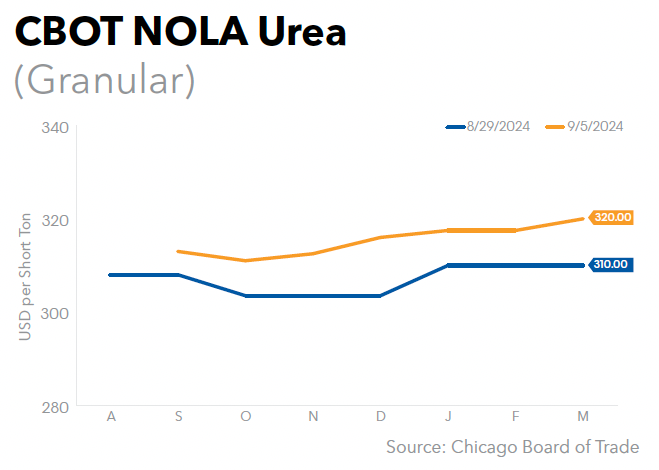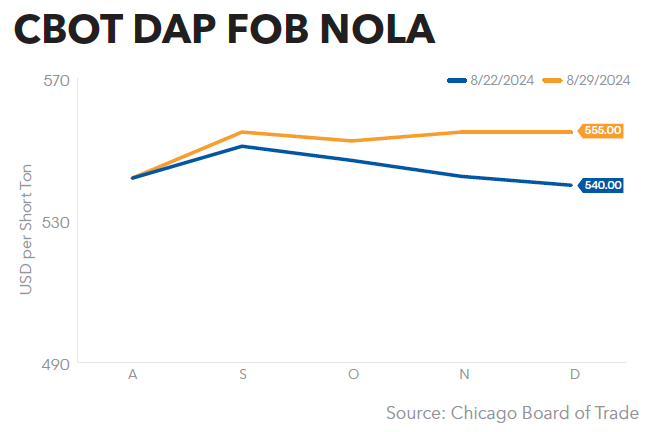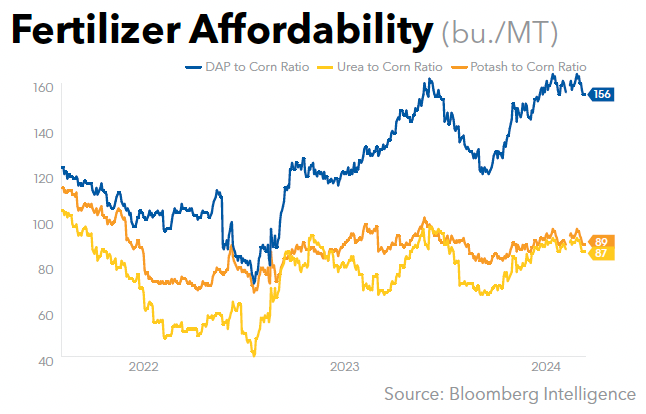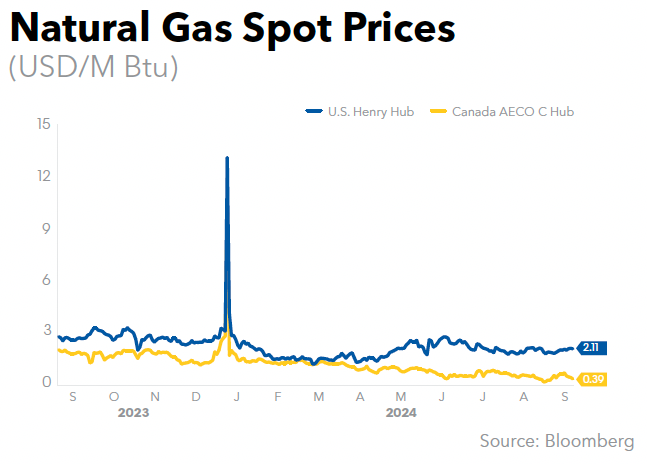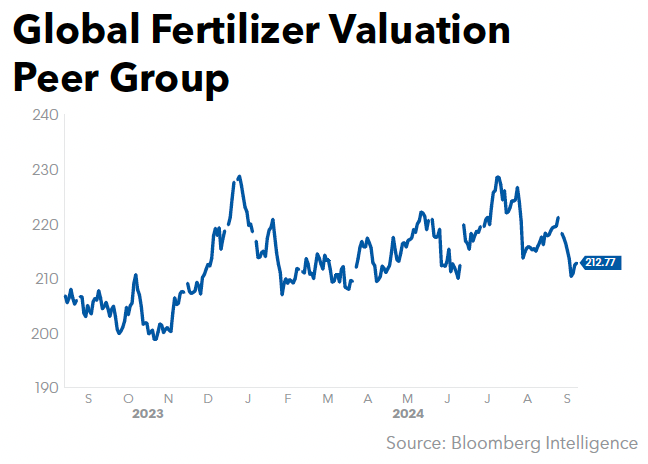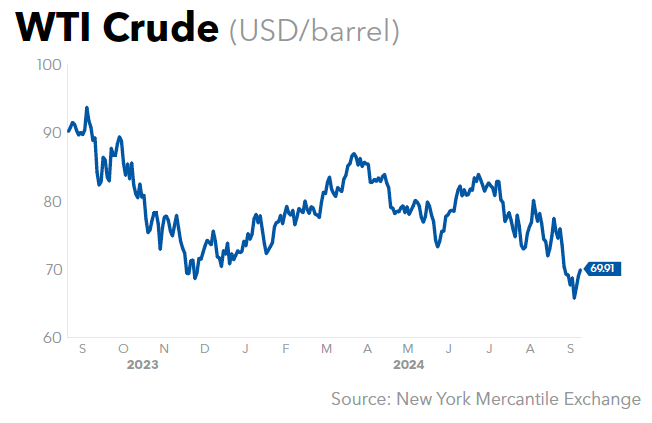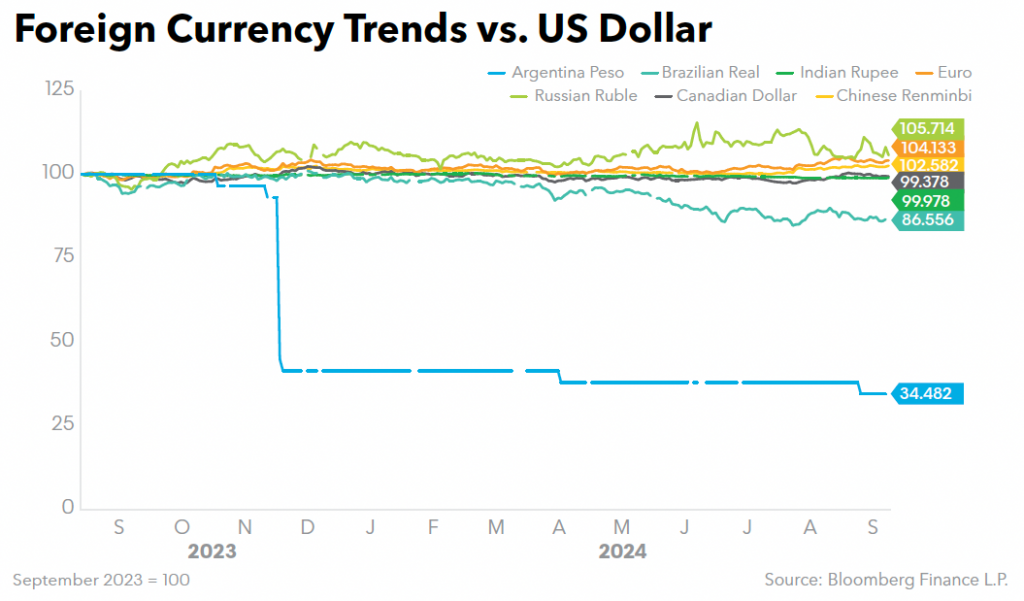Francine Shutters Offshore Platforms; Truck Loading Paused at Gulf Coast Fertilizer Facilities
Hurricane Francine made landfall late Wednesday afternoon in southern Louisiana in the Parish of Terrebonne as a Category 2 hurricane, packing 100 mph winds and dumping up to nine inches of rain in some Louisiana locations. More than 390,000 Louisiana residents were without power on Sept. 12 as the storm churned inland as a tropical storm.
Francine is the third hurricane to strike the US mainland this year and the strongest to date, ahead of Hurricane Beryl in Texas and July and Hurricane Debby in Florida on Aug. 5, which both registered as Category 1 storms at landfall.
A hurricane warning was in effect across most of the Louisiana coastline at midweek, while a storm surge warning covered the area from the Vermilion and Cameron Parish line in Louisiana to the Mississippi and Alabama border. A state of emergency was declared by the governors of both Louisiana and Mississippi.
Truck loading operations were reportedly shut down at the CF Industries Donaldsonville, La., nitrogen complex and the Waggaman, La., nitrogen plant in advance of Francine’s landfall, industry sources reported. CF did not respond to requests for an operational status update at midweek.
The hurricane passed near six Gulf Coast refineries and 22 ports, according to Bloomberg, but did not make a direct hit on any of the region’s major natural gas export plants. Oil and gas companies such as Chevron Corp., ExxonMobil Corp., and Shell Plc shuttered and evacuated as many as 171 offshore platforms in the Gulf as a precaution, or roughly 46% of the 371 manned platforms in operation there.
The Bureau of Safety and Environmental Enforcement (BSEE) said people were evacuated from three non-dynamically positioned (DP) rigs while four DP rigs were moved out of the path of the storm, equating to 20% of the DP rigs operating in the Gulf. BSEE estimated that approximately 38.56% of the current oil production and 48.77% of the current natural gas production in the Gulf was shut-in in advance of the storm.
Louisiana’s Port Fourchon conducted emergency evacuations in preparation for the storm, while residents near ExxonMobil’s Beaumont, Texas, refinery were warned to shelter in place and seal doorways in case of a gas release from the plant.
BNSF Railway said it planned to stop interchanging traffic in the region in preparation for the storm, and the company issued a temporary permit embargo at midweek affecting all traffic originating or destined to move through the area.
Union Pacific reported on Sept. 10 that it was also taking precautions, including staging generators, water pumps, rail ballast and panels, additional diesel fuel, hotels, and supplemental transportation for crews.
Francine will likely cause $2-$3 billion in damages and losses, said Chuck Watson, a disaster modeler with Enki Research. The hurricane center is tracking three other disturbances in the central Atlantic Ocean that have potential to become tropical storms.
One upside to Francine as it moves inland is that it will bring much-needed water to the parched Mississippi River basin, where low water levels have threatened to roil shipments of fertilizer, corn, and fuel.

